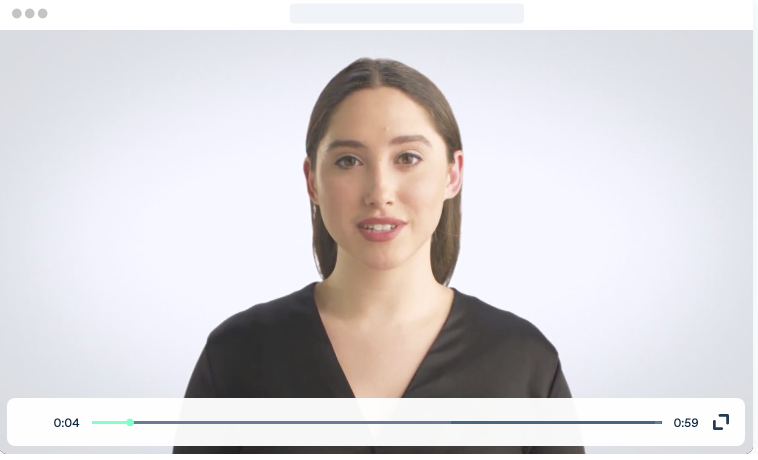
AI video might be the answer to your problems
When experts demonstrate applications for artificial intelligence (AI), the potential looks amazing. But, the application has always fallen a bit short.
AI’s Rough Start
One of the problems with AI-created interactions in the past has been it’s lack of “human-ness.” Robotic voice synthesizers and response algorithms created rigid, machine-like experiences. Early AI wasn’t able to mimic human speech in a way that people liked or were comfortable with.

Never send a human to do a machine’s job… Agent Smith, The Matrix (1999)
Flash-forward to 2020 and the modern AI is more adept. It might also allow small businesses and small HR departments to compete on a larger scale.
AI is already answering your spoken questions and driving cars. Google Assistant can make a restaurant reservation that sounds scary real (so real that it has to notify the recipient during the call). AI can also regulate appliances, watch security, alert medical help in real time and sometimes even substitute for humans.

Okay, so better, stronger, faster and learning more each day without getting tired. Where is Skynet and the Terminators? A Techno-Apocalypse is afoot.
What is AI exactly?
AI’s definition is evolving with each new advancement. The distinction between what it was and what it can do today is changing rapidly. Today, AI is one of the hottest technologies in the business world.
The word Artificial Intelligence (AI) was coined by Dartmouth cognitive scientist and professor John McCarthy in 1955. He’s known for his exploration of machine learning and the capacity for formal reasoning like humans.
Advocates say AI helps humans solve problems faster, and perform complex tasks. Zachary Jarvinen, head of technology strategy, AI and analytics at OpenText describes AI like this: “… AI is a technology solution that helps the enterprise get more done with fewer resources by automating mundane, data-heavy tasks. More specifically, AI is a computerized simulation of human intelligence that can be programmed to make decisions, carry out specific tasks, and learn from the results.”
So, how does AI Work?
In simple terms, AI analyzes data to make predictions about the future. AI learns very much the way humans do – except at a faster rate. The way it responds varies depending on the type of AI.
AI technology has the potential to benefit lots of businesses. The challenge is figuring out how.
One challenge some HR departments have is supporting customers while training their staff. Long phone conversations for support teams rack up considerable dollar amounts in time and resources. So, what if you could delegate some of that time to an AI? What if you could let an AI interact with customers to solve their FAQs, so that your human staff is free to deal with larger issues? The amount of cost saved in a decreased phone calls to your support center alone might be substantial.

Enter Synthesia
A new service that recently came to my attention uses scripts you provide, then maps your written words to their AI Avatar. Their marketing says they can help you “create a video as easy as writing an e-mail.”
While you have the option to choose a number of voices, faces and gender-types, you also have the option to create a custom avatar of you or a staff member. Or to use real person voice-overs while the AI model presents.
You can also create variations of videos using multiple languages. So, if your company has remote staff working from other countries, this might be a way to train them in their native language.
Of course there are some limitations. The avatars are getting better, but they aren’t foolproof. And you still have to write the script and design the graphics.
But if you can’t afford to hire models, a videographer and voice talents, the possibilities are easy to see. Plus it just might free up your valuable time to focus on more important projects.
- Your Granny’s on TikTok. Oh my! - May 17, 2022
- Five marketing automations credit unions should try - February 21, 2022
- Giving thanks and sharing some Monstrously Munchy Recipes - November 22, 2021
